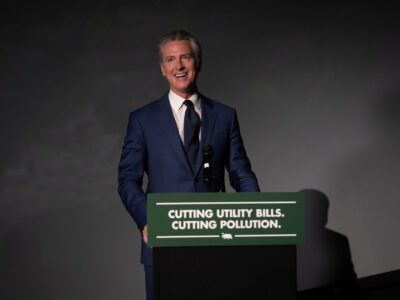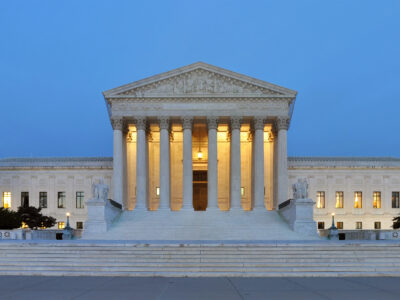The Supreme Court & Interstate Pollution
It was puzzling that the Court agreed to hear the case. How has it ruled? And why?
Months ago, the Supreme Court agreed to hear an “emergency” request to stay EPA’s new rule regulating interstate air pollution. Like most observers, I was puzzled that the Court was bothering with the case before the D.C. Circuit even had a chance to consider the merits of the challenges. Months later, the Court has finally granted the stay., over a strong dissent from Justice Barrett. EPA may be able to fix the problem with this rule very quickly, and the Court’s opinion in Ohio v. EPA — at least one first reading — doesn’t seem to carry broad implications for other environmental litigation.
EPA’s Plan and the State Challenges
The background of the case is messy and requires some explanation. A Supreme Court case called EME Homer upheld EPA’s general approach to regulating interstate air pollution. This case deals with a revision of that earlier plan.
For reasons that aren’t clear, EPA failed to start the process for issuing its revised plan until its hand was forced by a lawsuit. It then disapproved plans that had been submitted by state governments much earlier and issued its own plan covering sources in 23 upwind states. About half these states went to court to challenge the disapproval of their own plans and received stays of the disapprovals from regional courts of appeals. The result is that the plan is now in effect in only 11 upwind states.
The challengers filed suit to vacate the revised plan entirely. By law, that suit had to be brought in the D.C. Circuit. They raised a bunch of other issues. The one that attracted the Court’s attention was the effect of subsequent stays on EPA’s plan. In particular, the Court asked the parties to address whether the emission controls imposed by the EPA plan are reasonable regardless of the number of states covered by the plan. EPA says that it explicitly said when it issued that rule that the rule was severable and should apply even if the courts later exempted some states.
The challenges to EPA’s plan involve some tricky procedural issues. The first stays were not issued until after EPA had already posted its final plan on its website, but before the plan was officially published in the Federal Register. The challengers say that EPA had the duty to reconsider its plan during this interim period because of the stays. EPA says the record was already closed at that point and that it was not required to do updates unless someone requested reconsideration by the states. A related issue whether comments filed earlier in the rule making process gave EPA sufficient notice that its plan might be inequitable if many states were exempted by the courts, and whether EPA’s discussion of severability was a sufficient response to any such concerns.
The Court’s Ruling
Justice Gorsuch, a fierce skeptic of government regulation, wrote the opinion for the Court. Basically, he agreed with the industry’s argument that EPA had failed to address what would happen to the requirements for other states if some states escaped from the regulation’s requirements. The failure to do so, he said, was arbitrary and capricious. EPA’s methodology is to set a uniform cost level for emissions reductions which applies to all the upwind states, and Justice Gorsuch speculates that it might have chosen that cost level differently if it had known that fewer states would be covered.
From my perspective, there are two disturbing aspects to Justice Gorsuch’s opinion. First, he finds the equities in the case evenly balanced — on the one hand, the burden of industry in some states of starting to comply with a rule that could turn out to have a flawed explanation, and on the other hand, the health benefits to the downwind states. This displays a callousness toward human health. It also ignore the burden on the downwind states, which will now have to adjust their own air pollution plans because of the pollution from upwind states. The second is that Gorsuch is thoughtlessly engaging in Monday morning quarterbacking. As the dissent explains, EPA addressed hundreds of comments by states, industry, and others, and the parties challenging this regulation had done a bare minimum to flag this one. The majority seems to have litle understanding of the realities of rulemaking.
Justice Barrett wrote a strong dissent. Here is the crux of her argument:
“[T]he Court’s injunction leaves large swaths of upwind States free to keep contributing significantly to their downwind neighbors’ ozone problems for the next several years—even though the temporarily stayed SIP disapprovals may all be upheld and the FIP may yet cover all the original States. The Court justifies this decision based on an alleged procedural error that likely had no impact on the plan. So its theory would require EPA only to confirm what we already know: EPA would have promulgated the same plan even if fewer States were covered. Rather than require this years-long exercise in futility, the equities counsel restraint.”
Justice Barrett’s thoughtful dissent is a good sign for the future. It shows her willingness to take EPA’s arguments seriously. Unlike Gorsuch, for example, she doesn’t seem to have a reflexive antipathy to all government regulations.
Broader Implications
What does the Court’s opinion tell us about how it might approach future cases? Justice Barrett’s dissent indicates that she may be an available vote in future environmental cases, something that could be important for years to come. It’s also plain that the Court found the case far more complicated than it expected, which may discourage such interventions into lower court litigation in the future.
And importantly, the Court’s opinion claims to be a routine application of longstanding rules. That means that it is unlikely to have a lot of impact on how courts approach other environmental cases. It’s also good news that the Court said nothing that calls into question its earlier decision in the EME Homer case, which upheld EPA’s basic approach to regulating interstate pollution. When he was a lower court judge, Justice Kavanaugh had opposed that approach, so it is a relief that he did not raise his objections again.
In terms of the specific issue, EPA may want to consider issuing an immediate rule clarifying the issue that the Court focused on. That might help shortcut a lengthy litigation process.
Reader Comments
2 Replies to “The Supreme Court & Interstate Pollution”
Comments are closed.







how about name of the case or link to the decision?
Thanks for flagging that. I’ve added it to the post. https://www.supremecourt.gov/opinions/23pdf/23a349_0813.pdf